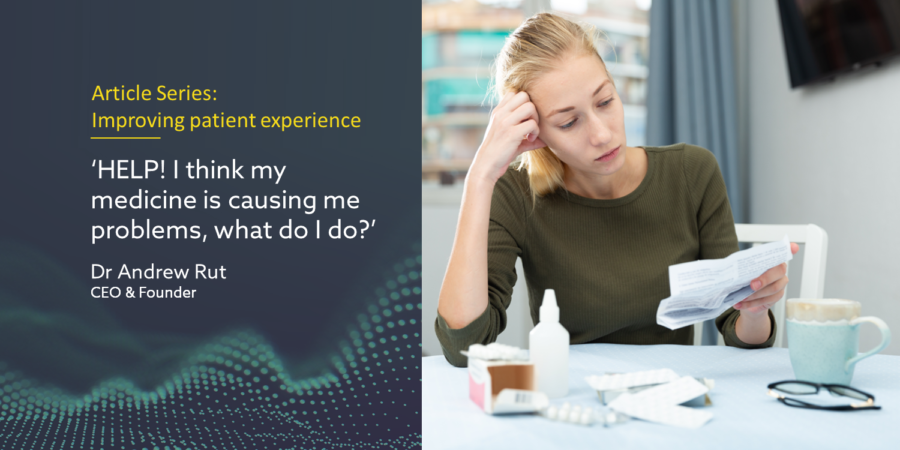In this article Dr Andrew Rut discusses what industry can do to make safety reporting easier and more accessible.
When a patient experiences a problem with their medicines where do they go to find out more: look for the patient information leaflet, search Google, find the product webpage, speak to their doctor or pharmacist, or do they just do nothing at all?
The various options either lack immediacy, trust or empathy and create a barrier to communication that is a problem for the patient, their caregiver, the authorisation holder, and the industry. So, why does it matter whether a patient reports an issue or not?
Put the patient first
As I’ve discussed in a previous article, concerns about side effects are a major factor in non-adherence. However, evidence shows that healthcare professionals (HCPs) tend not to focus on adverse events, whether caused by lack of understanding, complexities of reporting systems, or just lack of time the result is that problems go unreported1, 2. Therefore, it is important to make it easy for patients and their caregivers to report themselves, complementing the actions of physicians.
Patients require an easy and trusted route to report problems. As in all other industries, problem reporting must be simple, clear, and available 24/7/365. In parallel, both patients and HCPs should be informed of what actions to take, particularly around mitigating any issues.
Absence of evidence is not evidence of absence
To develop a complete picture of product safety Pharma must capture as much relevant data as possible, as early as possible, thus facilitating downstream safety management. By building a robust body of knowledge, the Market Authorisation Holder (MAH) can determine accurately causation versus association. Even when a product goes ‘generic’ manufacturing processes change (particularly for biosimilars) and given bioequivalence has relatively wide boundaries (+/- 10%) the need for monitoring of product safety and quality never stops3.
Failure to engage with patients means their voices will go unheard, they may become despondent or frustrated with the issues they experience and decide to stop their medication altogether. Therefore, Pharma must be proactive in gathering data, analysing, and then communicating their findings to patients and HCPs.
Increase data consistency
The age of online communication has brought many opportunities to retrospectively collect safety information from channels that may not have been designed for that purpose. Over recent years there has been significant focus on developing AI tools to scrape safety data from emails, social media, and even commercial websites. However, the information contained in such sources is generally very poor with lots of anecdotes, bias through social media echo chambers, and lack of focus4. The associated value is therefore limited and simply adds to the noise of the analytics process.
Take a step out of the post-marketing world and consider clinical trials where each subject and each data point matters. It is inconceivable that trial subjects could be asked to ‘give an update on how they feel from time to time in whatever format they choose’. Safety signal management relies on high quality data - no amount of polishing garbage will transform it into better garbage! Far better to enable consumers and those close to them provide valuable information in format that is both intuitive to them and that also delivers value for assessment.
What can we do to help patients?
It is essential that we provide patients and their caregivers access to the information they need, when they need it. To do that we must put in place omni-channel solutions where there is a unified ability for patients and the healthcare community to access trusted information while simultaneously making it easy to report the problems they are experiencing. Good data drives good analysis - and better data drives even better analysis - that in turn drives updates to medical information - a ‘virtuous cycle’. Therefore, direct patients to trusted digital solutions where their voice can be heard 24/7/365, with an experience that maximises engagement and the value of the data captured. – no jargon or complex questions.
Patients must trust the process and see Pharma as an ally in developing better medicines that are used appropriately and result in better outcomes.
References
1. Why Do We Doctors So Often Fail To See Symptoms Are Drug Side Effects?
2. Why Clinicians Don’t Report Adverse Drug Events: Qualitative Study








